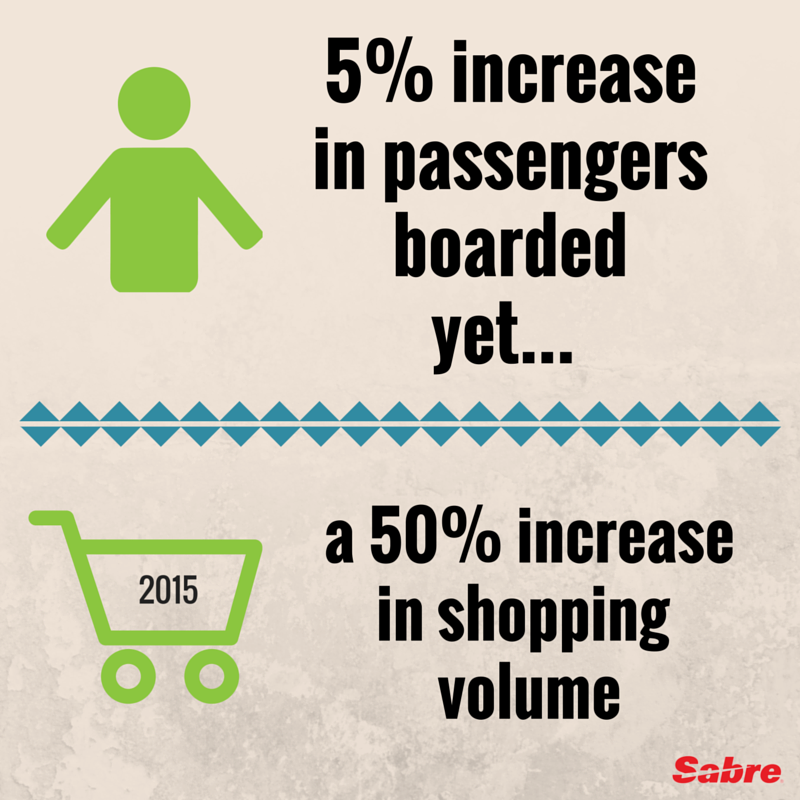This is a viewpoint from Sabre CEO Tom Klein.
While it’s not always straightforward to see an opportunity that others can’t yet see, this sort of foresight and vision is essential to true innovation. Coupled with persistence and hard-work, such a long-term vision can realize great rewards for any organization.
I recently had the pleasure of addressing the annual Sabre Airline Solutions Global Conference, where I shared some of the key opportunities defining the future of the airline business. Presenting to hundreds of decision makers from across the airline business, the emphasis was on the customer-centric approach that makes the most impact in travel.
 While the industry sees a 5% increase in passengers boarded year-over-year, customer shopping has increased by more than 50% over the same period. Clearly there is an opportunity here to use artificial intelligence to deploy data and analytics to make real-time recommendations based on real user behavior. This would replace the traditional rules-based offers, which are quite limiting and generally don’t allow for deeply personalized and targeted shopping results that give users what they want when they want it.
While the industry sees a 5% increase in passengers boarded year-over-year, customer shopping has increased by more than 50% over the same period. Clearly there is an opportunity here to use artificial intelligence to deploy data and analytics to make real-time recommendations based on real user behavior. This would replace the traditional rules-based offers, which are quite limiting and generally don’t allow for deeply personalized and targeted shopping results that give users what they want when they want it.
“The farther a business can get ahead of customer needs, the quicker the customer can realize the value of the service — and the faster the business can recognize the revenue from customer purchases and adoption.”The process of getting ahead of customer needs involves a detail-rich understanding of the customer journey, an understanding that includes deep knowledge of the motivations, behaviors and desired outcomes of individual travelers. And the only constant here is change. Gradual change must and will accelerate to rapid change. Technology has conditioned consumers to expect that. We all want each iteration of a product or service to be better and faster.That means faster responses, complete optimizations, shorter waits, better options, more relevant and personalized offerings and improved outcomes. Technology is not new to the airline business. Yet it continues to be one of the most common items mentioned by airline executives as a top obstacle to improving customer experience. These technologies are also critical to improving operational performance and profitability. In order to achieve this customer-centric vision, there are several technologies that will have an out-sized impact on the travel industry. Ranging from the simple to the revolutionary, it’s within these areas that opportunities invisible to others can truly be uncovered.
Artificial intelligence
Artificial intelligence, including machine learning, is going to have an outsized impact on the travel industry. Already behavior modeling allows a machine to predict a desired outcome via predictive analytics. Expanding this capability is key towards building greater efficiency within the travel industry. While the industry sees a 5% increase in passengers boarded year-over-year, customer shopping has increased by more than 50% over the same period. Clearly there is an opportunity here to use artificial intelligence to deploy data and analytics to make real-time recommendations based on real user behavior. This would replace the traditional rules-based offers, which are quite limiting and generally don’t allow for deeply personalized and targeted shopping results that give users what they want when they want it.
While the industry sees a 5% increase in passengers boarded year-over-year, customer shopping has increased by more than 50% over the same period. Clearly there is an opportunity here to use artificial intelligence to deploy data and analytics to make real-time recommendations based on real user behavior. This would replace the traditional rules-based offers, which are quite limiting and generally don’t allow for deeply personalized and targeted shopping results that give users what they want when they want it.
